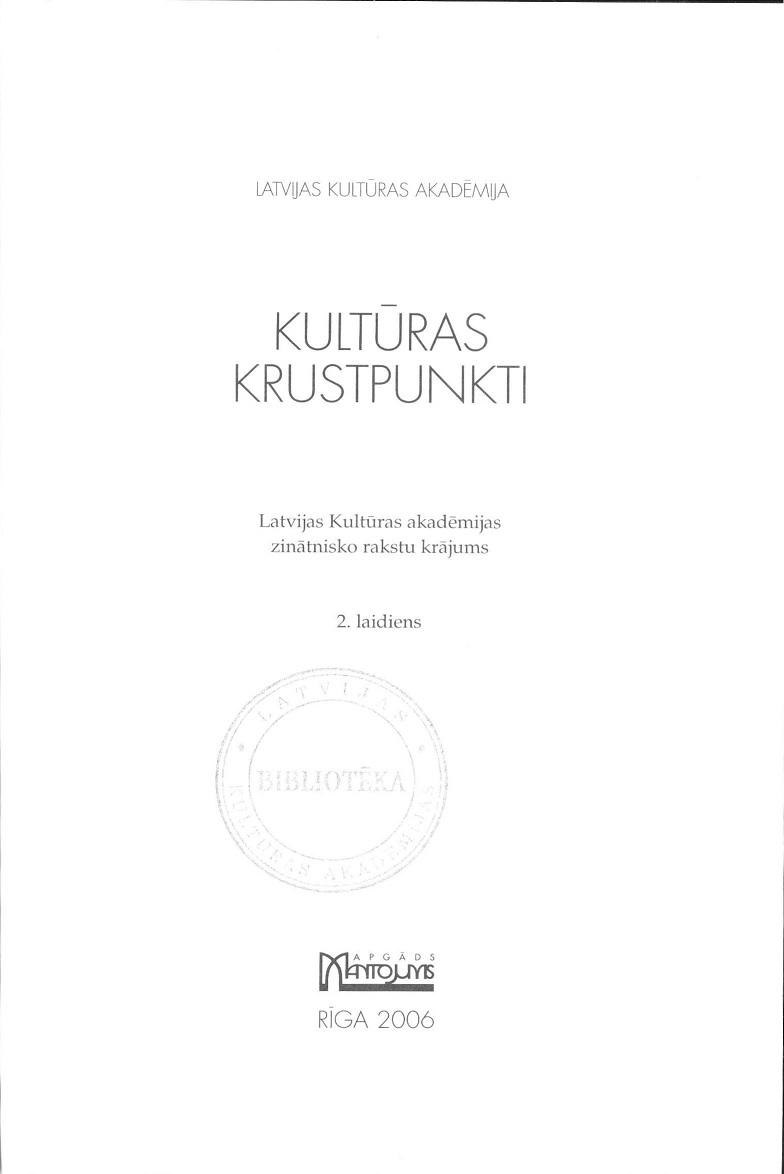Arheoloģiskās vietas Kūku pagasta iedzīvotāju priekšstatos
Archaeological Places in the Viewpoint of the Inhabitants of Kūku Parish
Author(s): Liene Ozoliņa, Juris Urtāns, Ieva VītolaSubject(s): Archaeology, Cultural history, Customs / Folklore, Ethnohistory, Local History / Microhistory, Cultural Anthropology / Ethnology, Sociology of Culture
Published by: Latvijas Kultūras akadēmija
Keywords: Kūku Parish; archaeological places; monuments; settlements; ancient burials; history of culture; graveyards;
Summary/Abstract: There are five archeological monuments that are under the state protection in kuku parish of Jēkabpils district: Dzirkaļu hillfort with a settlement and Church i baznīcas) hill, Asotes hillfort with a settlement, the ancient burials of Daugavas (Iglenieki, Ribāki and Kūkupasile. In the summer of the year 2003 a culture sociological survey was carried out in order to study how well informed the inhabitants of the parish are about the cultural-historical sites, what their attitudes towards the meaning of the cultural historical sites are, what their personal experience related to those places is. According to the answers given by the inhabitants of Kūku parish, it can be concluded that hill forts are recognized more in the cultural-historical landscape. Compared to other cultural-historical places, Dzirkaļu and Asotes hill-forts are visited more frequently. The respondents know how far they are located from their dwelling-places; the respondents are informed about the protecion status of the object as well as have their opinions about the period when hill forts were active and what their age is. Presumably, it can be related to the visual notability that hill forts have in the landscape, unlike Kūkupasiles, Ribaini and Daugavas Oglenieku ancient graveyards, which possess a relatively less expressive localization in the landscape. Part of the respondents do not perceive the difference between ancienl and natural sites. Likewise, a few interviewees regard as ancient graveyards the ones that are from more recent periods, as well as those functioning nowaday» Possibly, part of the present-day graveyards have been used for longer time and might have some archeological significance. It could be observed that the majority of the respondents do not know or do not distinguish historical periods, do not differentiate ancient-historical monuments and testimonies from the places of historical memory of more recent ages Thus, a phrase "ancient-historical monument" might be considered as a certain drawback of the questionnaire as several respondents perceived it in a conceptually narrower meaning - monuments as sights for commemoration.
Journal: Culture Crossroads
- Issue Year: 2/2006
- Issue No: 1
- Page Range: 179-192
- Page Count: 17
- Language: Latvian

